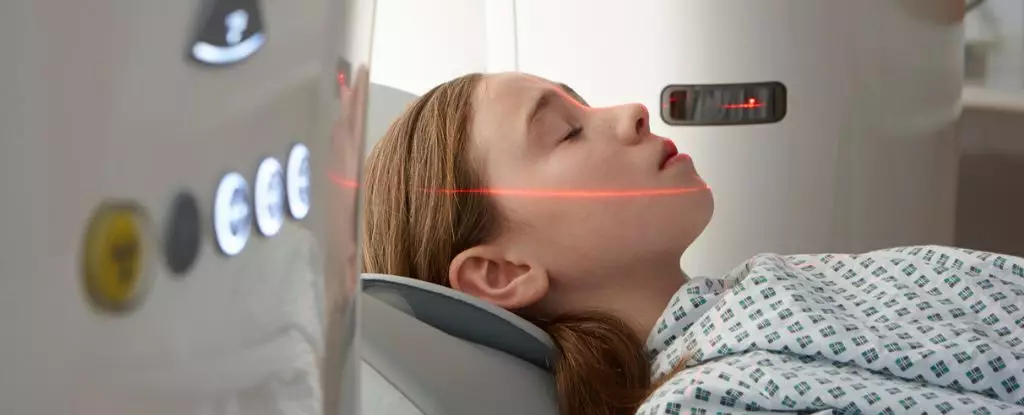In recent years, computed tomography (CT) scans have surged in popularity across the United States, becoming a cornerstone of modern medical diagnostics. From diagnosing tumors to assessing internal injuries, the utility of CT scans cannot be overstated. However, as their usage skyrockets—over 30% more than in 2007—so does concern surrounding the implications of radiation exposure. With the potential for low doses of ionizing radiation to influence cancer risk, this trend prompts a necessary examination of the balance between the medical benefits of CT imaging and its latent dangers.
One can’t deny the lifesaving potential of CT scans. Yet, as more individuals undergo these procedures, particularly for non-urgent issues, a critical question emerges: Are we risking long-term health for immediate diagnostic clarity? The rise of imaging technology necessitates that we scrutinize the acceptance of CT scans as a go-to diagnostic tool, not only from a medical standpoint but a public health perspective as well.
Navigating the Risk of Radiation Exposure
Research conducted by a collaborative team from the US and the UK highlights an alarming prediction: Current levels of low-dose radiation from CT scans could correlate to approximately 5% of all new cancer diagnoses in America. This estimation is not merely theoretical; it suggests an impending health crisis, with a projected 103,000 future cases of cancer attributable to CT scans performed in 2023 alone. While it is critical to note that these figures derive from analyses based on historical events like atomic bomb fallout, they nonetheless serve as a powerful reminder that the ramifications of medical technologies extend beyond immediate benefits.
Nevertheless, the current methodology for assessing radiation risk, often derived from studies involving survivors of high-radiation events, leaves much to be desired. The evidence linking low-dose radiation to cancer is tenuous, predominantly extrapolated from populations exposed to significantly higher levels. For example, cancer incidence among Hiroshima survivors has been observed to increase in correlation with their radiation dose—yet can we confidently apply that same risk to the nuanced realm of CT scans? Researchers are still wrestling with the question of whether the benefits of these scans outweigh the possible detriments of cumulative radiation exposure.
The Demographic Disparity in Risk
As the landscape of imaging technology evolves, it is critical to recognize that the risk associated with CT scans is not uniformly distributed among the population. Children and adolescents, in particular, exhibit heightened vulnerability to cancer from radiation exposure. Infants receiving CT scans may face an even greater risk of developing thyroid cancer later in life, especially among female patients. This disparity highlights an important ethical dilemma for healthcare providers: how do we safeguard the health of our most vulnerable patients while still providing necessary medical interventions?
As medical professionals and policymakers grapple with these questions, a call to action emerges: greater diligence in evaluating the necessity of CT scans. With available alternatives that pose no risk of ionizing radiation, the medical community must place a premium on informed decision-making, weighing the potential benefits of CT imaging against the risks of long-term exposure.
The Role of Patient Education and Responsiveness
Part of the solution rests in transparency and patient education. Medical professionals must not only explain the rationale for recommending a CT scan but also walk patients through the associated risks. This responsiveness can empower patients to make informed choices about their health and treatment options. The nuances surrounding radiation exposure must be part of that conversation, helping patients understand the statistical likelihood of risk versus benefit.
In an environment where the volume of CT scans is projected to continue climbing, discussions of responsible use are more crucial than ever. It is not enough to simply label radiation exposure as a minor risk—medical professionals must actively engage in practices that prioritize patient safety and consider non-radiative alternatives whenever possible.
Looking Toward Future Research and Policy
The ongoing discussions regarding the dangers of low-dose radiation exposure highlight a pivotal moment for both the scientific community and policymakers. Comprehensive follow-up studies that can span decades are essential to clarify the long-term implications of CT scans, particularly as they relate to different demographics. By investing in research that examines the impact of radiation exposure on a broader scale, we can formulate policies that not only promote the appropriate use of CT imaging but also mitigate unnecessary risks to public health.
While CT scans are invaluable tools for diagnosis, the potential connection between low-dose radiation and cancer outcomes reminds us the importance of vigilance and prudence in modern medicine. The dual challenge of harnessing innovative technology while safeguarding against its risks is a delicate balancing act that demands attention for the health of future generations.

